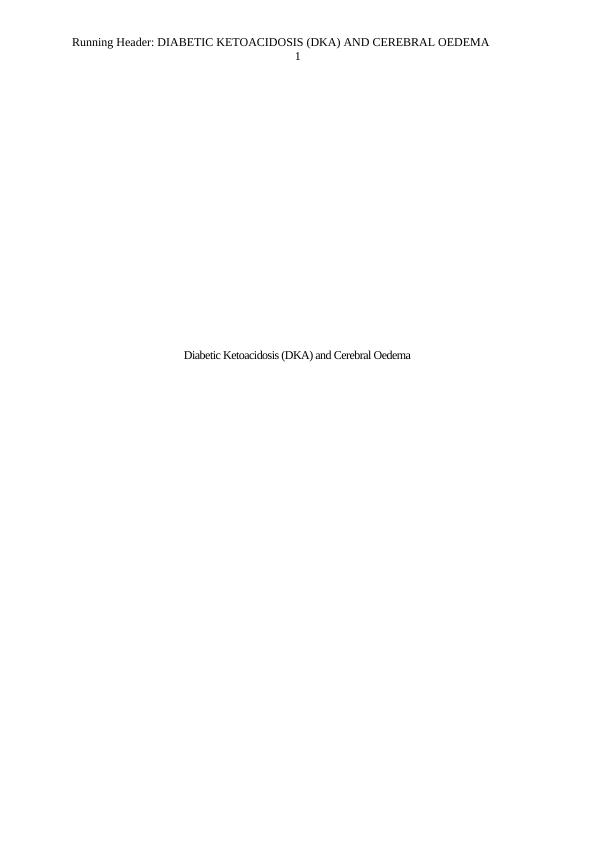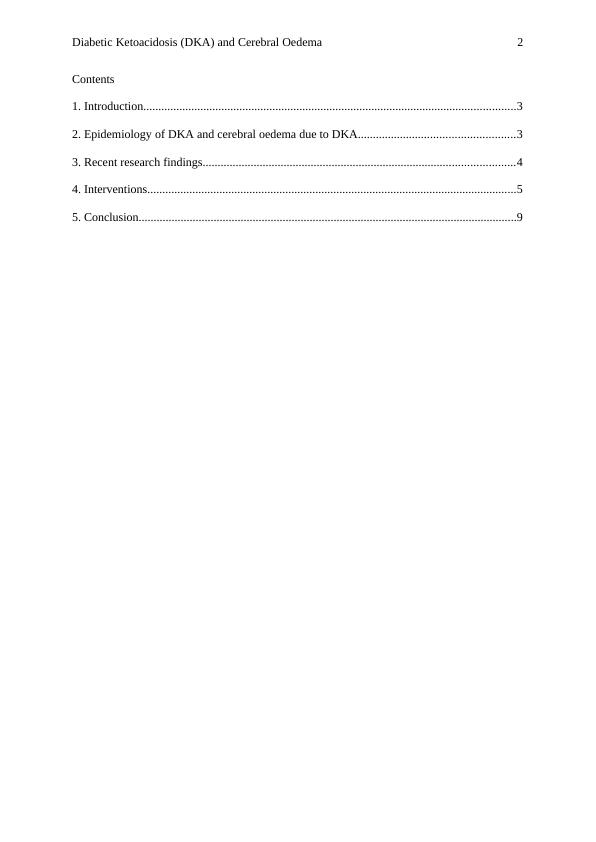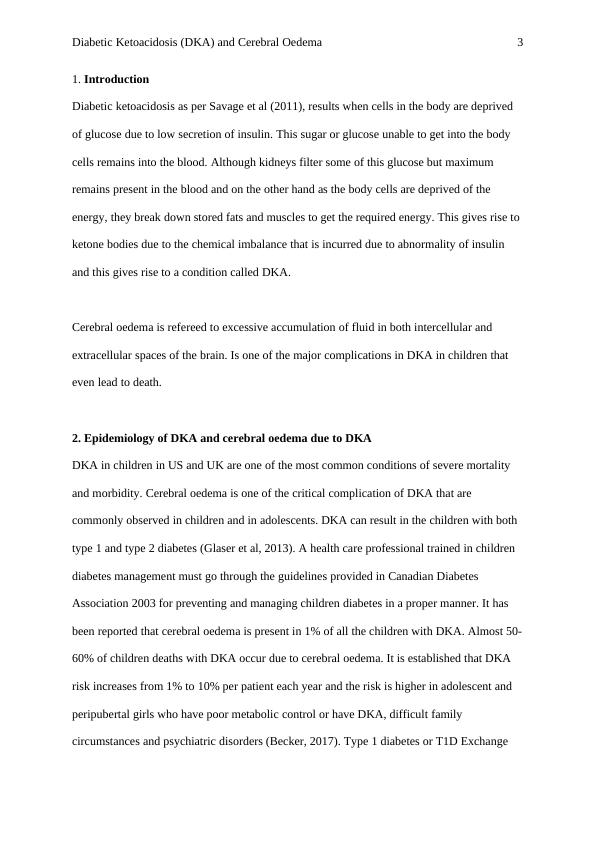Ask a question from expert
Diabetic Ketoacidosis (DKA) and Cerebral Oedema
14 Pages3817 Words251 Views
Added on 2019-09-22
About This Document
This article discusses Diabetic Ketoacidosis (DKA) and Cerebral Oedema, their epidemiology, recent research findings, interventions and more. It also includes symptoms, treatment approaches and monitoring techniques. Subject: Medicine, Course Code: N/A, Course Name: N/A, College/University: N/A
Diabetic Ketoacidosis (DKA) and Cerebral Oedema
Added on 2019-09-22
BookmarkShareRelated Documents
End of preview
Want to access all the pages? Upload your documents or become a member.
Managing Cerebral Oedema in Children with Paediatric Diabetic Ketoacidosis: A Policy Review and Recommendations
|12
|3946
|477
DKA Management Research Paper 2022
|4
|618
|18
Mrs. Brown’s Case Study: Understanding Diabetes Mellitus, DKA, and HHS
|8
|1537
|500
Evaluation of Diabetic Ketoacidosis Treatment Protocols: A Literature Review
|4
|700
|62
Case Study on Diabetic Ketoacidosis
|5
|1163
|87
Case Study Based Nursing Assignment
|11
|3185
|12



